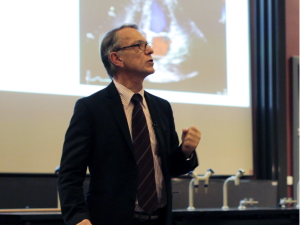In a KiSel-10 trial sub-study, Prof. Urban Alehagen and a team of researchers have observed a positive association between the levels of serum selenoprotein P (SELENOP) and the serum levels of both total selenium and the seleno-enzyme glutathione peroxidase GPx3. Accordingly, the researchers noted that the serum SELENOP concentration level can serve as a useful biomarker for the selenium status of individual study participants and of individual patients [Alehagen 2024].

Important to note here is that daily supplementation with 200 mcg of selenium from a selenium-enriched yeast preparation induced significantly higher serum concentrations of SELENOP in elderly community dwelling Swedish citizens, average age: 77 years. In the active treatment group, the selenium supplementation resulted in the saturation of SELENOP in the blood at a serum selenium level of 146 mcg/L. The selenium supplementation also resulted in a saturation of GPx3 at a serum selenium level of 99 mcg/L. This positive association between the level of SELENOP, on the one hand, and serum selenium and GPx3, on the other hand, is in agreement with the existing research literature [Alehagen 2024].


